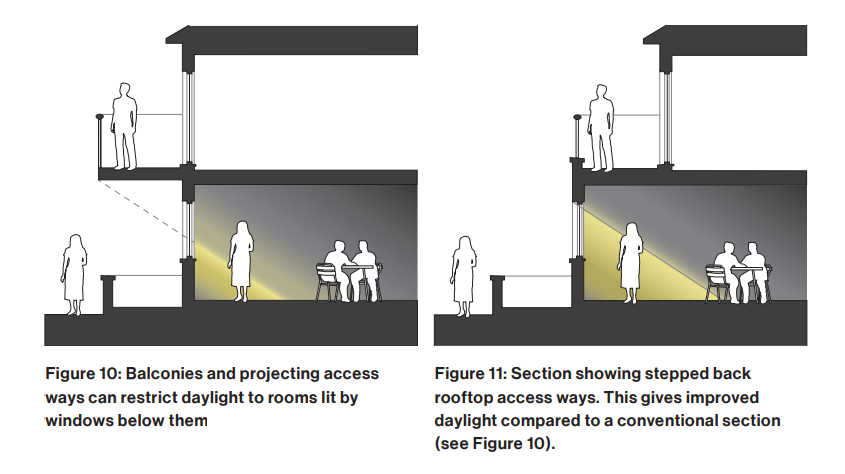Learning from Errors: Right to Light Assessment Shortcomings

Within a cutthroat landscape of real estate construction, understanding the nuanced area of Right to Light is essential for guaranteeing fruitful projects. A light rights survey plays a pivotal role in addressing possible light access issues that may occur when new developments are proposed. https://panduro-monrad-2.federatedjournals.com/a-significance-of-light-access-assessments-in-home-developments helps in assessing the current light conditions for adjacent properties but also aids developers in navigating the legal complexities associated with light rights. By gaining insights from the achievements and setbacks related to these surveys, developers can better position themselves to steer clear of litigation and ensure adherence with planning regulations.
While urban areas continue to grow and residential density rises, the importance of light rights in urban design must not be overstated. Conflicts over access to light are becoming more common, which makes it imperative for developers to understand their lawful obligations and the implications of Right to Light surveys. Through thoughtful thought and proactive measures, stakeholders can encourage cooperative developments that honor the their interests and those of their neighbors. In this article will explore the intricacies of light rights surveys, common mistakes to avoid, and the crucial role these assessments have in the wider context of urban growth.

Grasping Light Rights
The right to light is a legal principle that gives property owners the right to receive natural light through their glazing. In the United Kingdom, this right is typically established through continuous use over a period of 20 years. If this right is infringed upon, it can lead to significant legal disputes, making it vital for developers and property owners to grasp the implications of right to light on their developments.
When developers plan fresh buildings or extensions, they must take into account how their projects may affect the light access to surrounding properties. Not to account for existing rights to light can result in complaints from neighbors or legal challenges, potentially halting projects and incurring costly delays. This knowledge is crucial during the beginning of planning and development.
The right to light is not just about access to sunlight, but it also covers the quality of light in housing and commercial spaces. Urban environments, where buildings are crowded, often face issues related to right to light. Therefore, effective assessment and handling of these rights play a key role in achieving a balance between recent developments and preserving the light access of existing properties.
Legal Consequences and Regulations
Grasping the legal framework pertaining to Right to Light is crucial for real estate developers. The principle is rooted in traditional law and permits property owners to experience natural light entering their properties. In the UK, this entitlement can frequently be asserted if light has been accessed consistently for a duration of 20 years. Failing to acknowledge these legal implications can cause significant challenges, including potential legal conflicts or injunctions that halt construction projects.
Builders must guarantee compliance with both statutory regulations and local development policies. Right to Light assessments are an important part of this adherence, spotting any potential violations that may emerge from new developments. Ensuring compliance to the BRE (BRE) standards is also critical, as these provide a reference for assessing daylight and sunlight impacts on neighboring properties.
Judicial remedies for Right to Light violations can differ, ranging from injunctions to compensation payments. In some cases, contractors may be required to adjust their proposals to reduce any detrimental impacts on light availability for neighboring properties. Collaborating with legal professionals during the design phase can help handle these complexities, ultimately safeguarding the project from costly delays and conflicts.
Best Practices for Developers
To successfully manage the challenges of right to light issues, developers should start by integrating right to light assessments into the early stages of their project development. This preventive approach allows for the detection of any possible light encroachment risks before significant investments are made. Engaging with a professional surveyor who is an expert in right to light can provide crucial insights and analyses that can impact design decisions and reduce future disputes.
Interaction is crucial when addressing right to light considerations. Developers should keep open lines with nearby property owners and interested parties throughout the project. Clarity regarding schemes and likely impacts on light can help cultivate goodwill and lessen opposition. Addressing concerns early can often lead to compromised solutions that advantage both developers and neighbors, fostering a more collaborative environment in the development process.
In conclusion, developers must stay informed about legal precedents and changes in laws pertaining to right to light. Grasping how these laws evolve is essential to ensure compliance and reduce the chance of costly legal conflicts. Keeping abreast of https://posteezy.com/developments-right-light-measurement-technology and outcomes can also provide important lessons from previous projects, leading developers in arriving at informed decisions that respect both their entitlements and those of surrounding properties.
